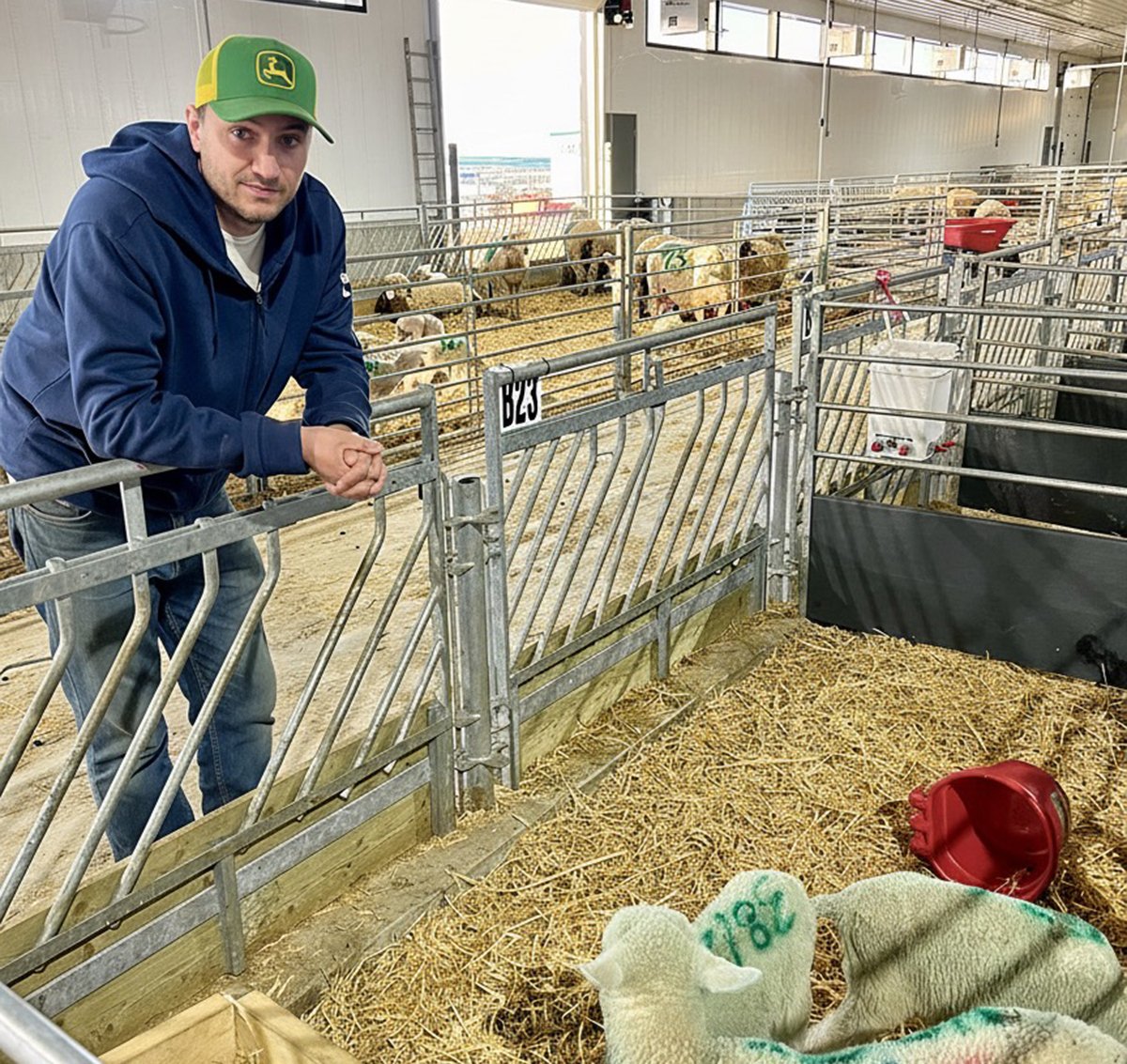Roundworms feed on animals’ blood and can be fatal
The mysteries of the worm genome have been unravelled.
John Gilleard and James Wasmuth from the University of Calgary’s faculty of veterinary medicine are part of an international team that se-quenced the genome of the haemonchus contortus, commonly known as the barber’s pole worm because of the pink spiral gut inside its body.
It is found most often in sheep and sometimes cattle.
“Globally, it is the most important parasite of sheep,” said Gilleard.
It is closely related to the nematodes found in the gastrointestinal tracts of livestock, which makes it a good model for learning more about them at the molecular level.
Read Also

Solar, sheep provide valuable farm diversification
Eric Steeves says raising sheep on forages grown under solar panels provided economic stability and perhaps even saved his family’s fifth generation southern Alberta grain farm.
It can also help scientists figure out why parasites are showing resistance against the three classes of drugs that can control them.
However, the work will take time because the genome is complex and there is considerable variability among the species. It has 300 million base pairs, making it a tenth the size of the human genome.
Gilleard started the work in the United Kingdom and collaborated with colleagues at universities in Glasgow, Edinburgh and Cambridge. He continued the work when he joined the vet faculty in Calgary five years ago.
This worm lives in the abomasum, the fourth stomach of ruminants.
The larvae are picked up in the pasture by grazing animals. The larvae turns into a worm with piercing mouth parts that feeds on blood.
“If you get tens of thousands of worms feeding on blood, clearly that causes blood loss and anemia,” Gilleard said.
An infestation of 10,000 worms can take a half pint of blood per day, which can eventually kill a small animal.
A producer is unlikely to see the worms in an animal’s feces because they are small and hair like.
Scientists want to look at more samples, but producers who suspect problems with parasites should first contact their veterinarians.
Agriculture Canada scientist Doug Colwell of Lethbridge said livestock parasites are everywhere. He and his colleagues have recently completed a study on prevalence across Western Canada that will be published soon.
They know haemonchus is in Alberta cattle.
Gilleard’s work will eventually allow parasitologists to identify the species and the amount of nematodes in fecal samples. They already know an animal can carry four to eight species at one time because each worm lives in a different part of the gut.
Large infestations can affect the animal’s overall condition with anemia, lethargy and weight loss.
Colwell is looking for antibodies against the worms rather than identifying the specific types.
“You can find antibodies in every calf that comes off pasture in the fall,” he said.
Researchers know that all livestock are exposed to worms, but infestations vary by location depending on local temperatures and moisture conditions. Southeastern Alberta has fewer worms than the wetter central part of the province. The Peace district also has low prevalence.
Counting eggs does not provide precise information because the eggs are not evenly distributed through the gut nor shed every day. Researchers also know parasiticide resistance problems are showing up on the Prairies.
“There is getting to be convincing evidence that some of the really good dewormers that worked really well 15 years ago are not working as well now so they don’t kill as many of the worms,” he said.
“The problem of resistance to drugs by nematodes is very common in other places.”
- lungs
- body cavity
- tear or lacrimal ducts
- beneath the skin
- gastro-intestinal tract
- Cattle host more than 14 species of gastro-intestinal roundworms, and cattle producers should be aware of the more important worms that can live in their animals.
- Different species live in different locations in the intestine. Just a few roundworms are usually present, which means the harm they cause is not always apparent and can make them difficult to assess.
- barber pole worm (Haemonchus placei)
- brown stomach worms (Ostertagia ostertagi and O. bisonis)
- threadworm (Trichostrongylus axei)
- thread-necked worm (Nematodirus helvetianus)
- four species of cattle bankrupt worms (Cooperia spp.)
- cattle hookworm (Bunostomum phlebotomum)
- nodular worm(Oesophagostomum radiatum)
- whipworm (Trichuris discolor)
- large-mouthed bowl worm (Chabertia ovina)
- hairworm (Capillaria bovis)















